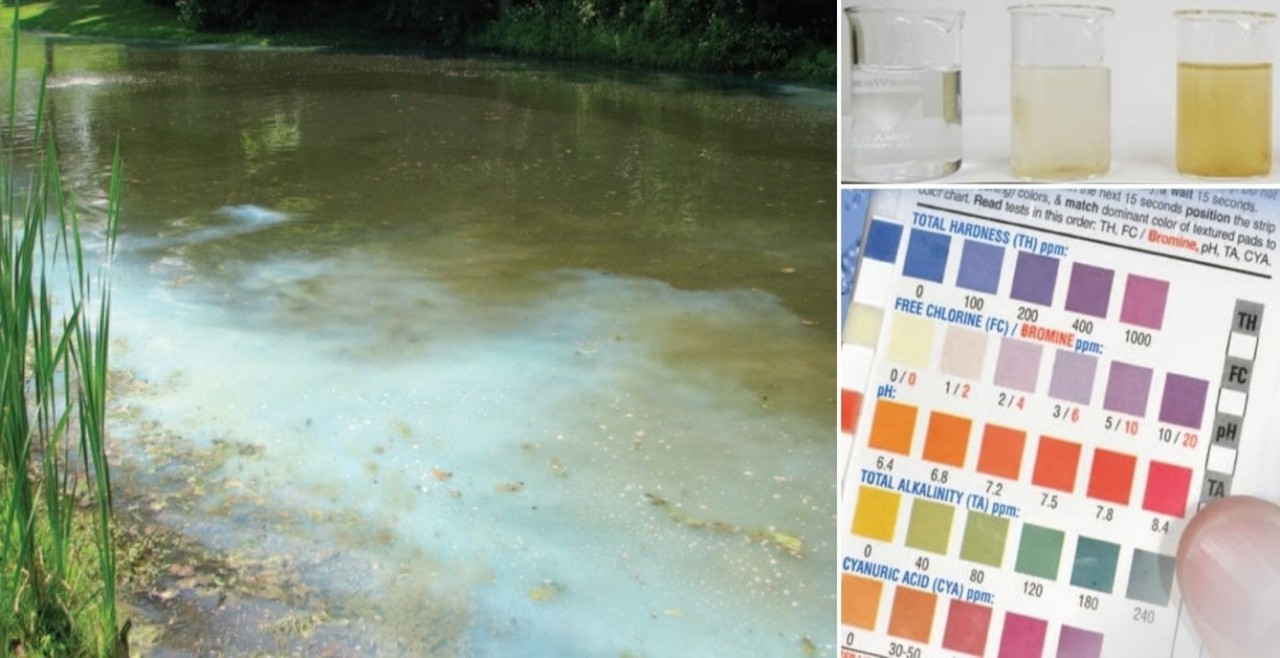The water quality conundrum for burn-off and in-season spray
When it comes to spraying foliar fertilizers to aid crop growth, or spraying pesticides to control weeds, diseases, and insects; sprayer operators and farmers pay close attention to various factors affecting product performance. These factors may include the calibration of the equipment, application timing, label instructions and to some extent, the water volume. However, oftentimes hardly any attention is paid to water quality – even though water comprises over 95% of the spray solution.
Whether it is from a well, lake, stream, or pond, it may be the deciding factor between ineffective and optimum product performance. Even town water is treated for human consumption, and its pH may not necessarily meet the pH requirements for spraying pesticides. Often time, water is perceived to be good quality if it is clear not murky and it doesn’t contain any solids. However, clear water does not always equal quality water for spraying.

Poor water quality can reduce product performance
The active ingredients of pesticides and fertilizers applied by foliar spray are comprised of ions with either a positive (cations) or negative (anions) charge. The pH of spray water and the amount and type of dissolved minerals can interact with these ions, reducing efficacy of the actives. In addition, poor water quality can reduce the solubility of the actives and decrease their absorption by the targeted pest, resulting in lower performance and in severe cases, the need to re-spray. Oftentimes, the quality of water only slightly reduces the efficacy of the pesticide, leading to not-enough-control of tolerant or tough-to-kill weeds, insects or diseases and even the start of build up of resistance.
The applicator might blame the product for the poor performance and decide to increase the application rate or add another product in the tank or, s/he may blame the weather or weed/pest resistance for the lack of performance. In either scenario the operator avoids checking water pH, hardness and quality in general.
Impacts at the molecular level
Water quality – specifically temperature, pH, hardness and total suspended solids (turbidity) – are key to a successful spray. Most herbicides, fungicides, and insecticides are weak acids or neutral to weakly-alkaline and perform best in slightly acidic water ranging from pH 4.0 to 6.5. When water pH is outside these ranges, product performance is not optimal, and the active molecules can even fall out of solution.
The pH of the spray solution can also influence the integrity of the active molecule, should the mixture sit in the tank for an extended period of time before spray. For instance, a weakly acidic pesticide placed in slightly acidic water can remain entirely intact. However, placing the same pesticide in alkaline water can cause hydrolysis and degradation, and this can be exacerbated by water temperature and electrical charge. Now, if you spray this pesticide, it will have reduced ability to penetrate the leaf/insect cuticle and be active and efficacious.
Water hardness can also negatively affect efficacy of pesticides. Negatively charged pesticide molecules have affinity to calcium and magnesium – abundant in hard water. This creates irreversible chemical bounds that render the altered molecules unable to stay in suspension, hit the targeted pest or translocate at a slower rate through its cuticle.
Turbidity comes from the negatively-charged particles suspended in the water; this is what causes water to be muddy or murky. These suspended molecules attract positively-charged organic pesticides and bind to them, forming complexes unavailable for uptake or translocation in the pest.
What to look for in a spray water solution?
Water hardness is measured in parts per million (ppm) or grain per gallon (gpg; 1gpg being equal to 17.14 ppm). Test results from 100-200 ppm indicate hard water, with anything over 160 ppm being very hard. The pH level of water intended for crop spraying should not exceed 7 on the pH scale. I recommend always doing a water test before spraying to assess the hardness and pH level of your water. If the test reveals hard water and/or high pH levels, water conditioner is recommended to soften the water and lower its pH, making it more suitable for crop spraying.
How can OMEX help?
Softening spray water not only improves the efficacy of pesticide application at burn-off and desiccation, but also reduces the risk of soil pH increasing over time due to the continuous use of water with high pH. OMEX offers two water conditioners; each formulated to be most effective depending on the application.
During burn-off, we recommend pHix, a water conditioner that is formulated with stabilized sulfur. pHix creates an ideal environment inside the spraying tank for maximum herbicide efficacy by reducing water hardness to levels below 50 ppm. The acidic nature of pHix also lowers the pH of the spray solution to 2.5–3.5, which helps prevent herbicides from becoming chemically tied up with the cations that are usually present in hard water, such as Ca2+ and Mg2+. When using pHix, always add it to your water first to ensure the water is conditioned before adding your herbicide to the tank.
For in-season spraying, water conditioning needs are slightly different, so we recommend SopHtner95, a soil and water pH conditioner. SopHtner95 increases the solution chelation properties, and also buffers the tank mix solution and controls algae in the tank. SopHtner95 is formulated using naturally-occurring organic acids, and is safer for the environment and applicators.
By having the right products on hand to soften and correct pH levels in hard water, you can improve efficacy for your burn-off and in-season spraying. Give your OMEX representative or Ag Retailer a call today to learn more about how our water conditioners can bring benefits to your spray operation.
OMEX also offers a lineup of Primers, Starters, Foliars, PGRs, Biologicals and Biostimulants that help set your crop up for a good start, reduce stress and address deficiencies, hasten maturity and preserve yield and quality.
